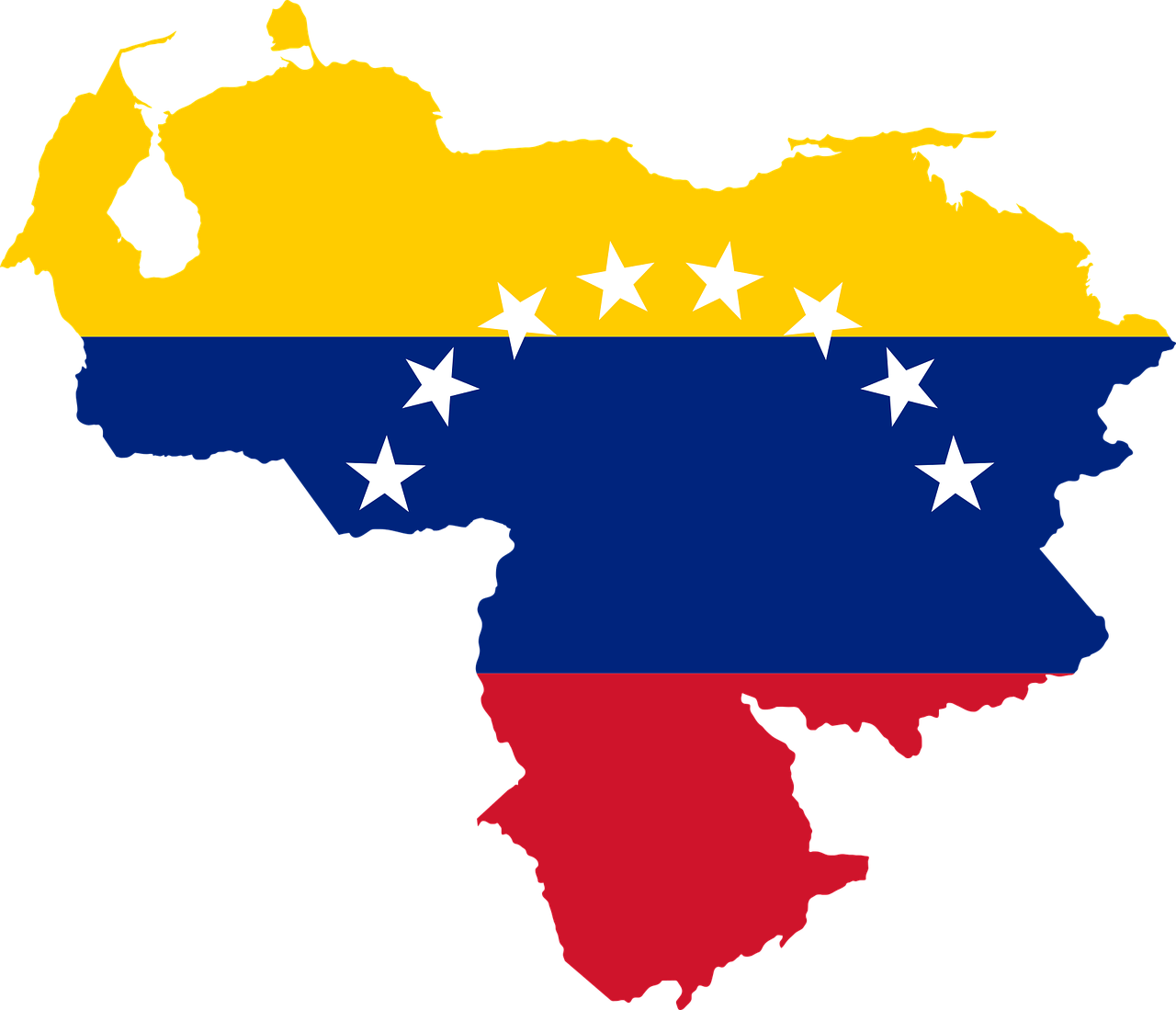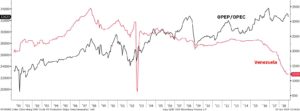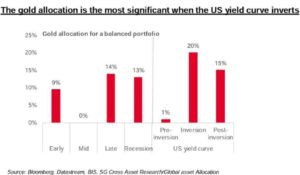
Date: 31 January, 2019 - Blog
Oil prices have risen recently as investors fear that the Venezuelan crisis will affect global supply.
In the short term, we do not think that a crisis in Venezuela causes a major rise in crude prices. Venezuelan production has fallen steadily since 1998, from 3.5 million barrels / day to 1.2 today, with a significant decline in the last 3 years due to a deterioration of the production tool. See graph. If there is an impact, it will be rather on the WTI than on the Brent, because Venezuela is the 4th importer of oil of the United States and exports 45% of its production towards the United States. And the overall situation is less critical today, as the growth in demand is decelerating because of the overall economic slowdown.
Oil production in Venezuela (red) and OPEC (black). In December 2002 and January 2003, a general strike at PDVSA to bring down Hugo Chavez led to a halt in Venezuelan production

On the other hand, in the medium to long term, Venezuela remains a bearish factor on oil prices, because it could return to the oil market with at least 2 million barrels / day when the production equipment will be put back in working order. Venezuela holds 18% of the proven world reserves with 300 billion barrels, followed by Saudi Arabia (270), Iraq and Iran; but the Venezuelan reserves are essentially extra-heavy oil from the oil sands of the Orinoco.
Gold continues its recovery, from $ 1,180 in summer 2018 to $ 1,302 today. Gold prices are favored by falling real interest rates, the stabilization of the dollar, the state of the world, the volatility of financial markets and the fear of a recession. De-dollarization is pushing emerging central banks to increase the share of gold in their foreign reserves, Russia, Turkey and Kazakhstan in the lead, and Poland and Hungary just recently. Between 2017 and the first half of 2018, the “success” of bitcoin and other cryptocurrencies had withdrawn some demand for gold. Today, “cryptodisillusion” pushes investors back to gold.
But the Venezuelan crisis may not be foreign to the rise in gold above $ 1,300. The Maduro regime is trying to repatriate $ 1.2 billion of gold from the Central Bank of England, but the BoE is opposed to repatriation due to US measures seeking to block Venezuelan assets abroad. Gold is an important part of the Venezuelan foreign reserves, which account for 77% of total reserves. With the refusal of the BoE to give back Venezuelan gold, the question arises: is the gold stored in the central banks there? In 2012, Germany decided to repatriate a part of its gold stored in Fort Knox, but the United States refused; officially, the Fed put forward the costs of transport and security. Finally, in 2014, Germany renounced, considering that its gold was safe in the United States. According to a study by the Monetary Fund, 80% of central banks would have leased 15% of their gold reserves to external providers.
A HSBC study recalls that the top 3 safe-haven assets in volatile financial markets and economic uncertainties are: the US 10-year, the yen and gold. The Swiss franc has lost its status of star in safe-haven assets since the creation of the euro.
In a diversified tactical allocation, US 10-year and gold are favored as protection assets, alternating our positioning according to the situation. Last September, the duration was extended when the US 10-year reached 3.25%, then recently this duration was reduced when 2.70% was reached to overweight gold.
Asset allocation: Increase gold weight by the end of economic cycle (curve inversion)

Does consolidation in the gold sector (Barrick with Randgold, Newmont with Goldcorp and Goldfield rumors with Anglo Gold) signal better days for gold? The combined rise of oil and gold, does it signal new reflation policies, in China, and/or a weaker dollar in the coming months?
- Oil: a producer-consumer equilibrium point around $ 75 Brent seems most likely
- Gold: the revival of a true safe-haven asset
- In a balanced portfolio, favor gold over US 10-year duration





